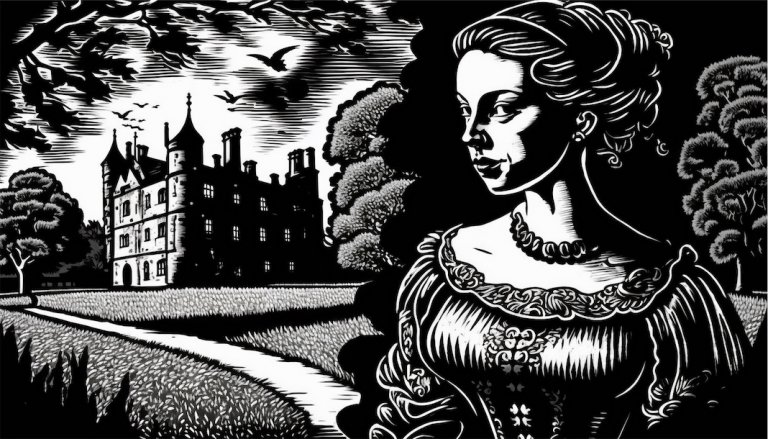
The Mummy’s Curse
London is full of ghosts, but the best supernatural story in Bloomsbury concerns a mummy’s curse.
On the first floor of the British Museum are various rooms devoted to artefacts from ancient Egypt.
There are several mummies and sarcophagi on display, but the one in question is numbered EA 22542 and is in Room 62.
Finding the Mummy
The mummy case was found at Thebes and can be dated by its shape and the style of its decoration to the late 21st or early 22nd Dynasty — about 950 to 900 BC
It is listed as a mummy case for an unknown singer to the god Amon Ra. The case is covered in hieroglyphs and has a portrait of a very beautiful young girl.
The mummy clearly had a long history before being found by Europeans, but the weirdness associated with it begins in the 1880s.
It is said that a group of English tourists in Egypt bought the mummy case in Thebes from a local trader. This trader didn’t say where he’d got it — but grave robbing was very common in those times to supply demand from Westerners keen to have something of Egypt’s history.
The holy mummia was a powerful medicine and those in search of healing would eat the dried mummy flesh. By the 16th Century in Europe, mummia or ground up mummy flesh was considered one of the most efficacious of medicines. For more on this read David Castleton.
The European craze with Ancient Egypt was at one of its heights in the Nineteenth Century after Napoleon’s campaign there in 1799
For the British population, the British takeover of Egypt in 1882 — which lasted until after the Second World War — opened up the country to British citizens and fuelled a fashion in all things Egyptian.
Egyptomania had a further surge in the 1920s, after Howard Carter’s discovery of the tomb of Tutankhamun in 1922.
From the day they purchased the mummy case, accidents started to happen.
The new owner was injured in a hunting accident the next day. After that, one of the Englishmen in the party mysteriously vanished, never to be seen again.
The owner of the mummy case had to have his arm amputated after the accident and, believing his bad luck to have come from the mummy case, he sold it to a dealer in Cairo.
Three people bought it after that and all of them died shortly afterwards, but not before they shipped it to London.
This supposedly cursed artefact, also known as the “Unlucky Mummy,” is said to have caused many who came into contact with it to suffer from deep grief, disease, injury, and death.
People alleged that it broke glass, distorted images in a disturbing way, and produced unusual nighttime lights and frightening footsteps in the homes they stored it in.
In London, a collector bought it, but a friend of the collector was psychic and felt great evil emanating from the coffin. He warned the man to get rid of it or it would kill him. The collector took heed of this and sold it on.
The new owner had it photographed professionally, but the photographer unexpectedly died the day afterwards.
Once the pictures were developed, instead of the beautiful girl on the case, they showed an ugly old woman — her eyes filled with evil.
The owner sold it to a lady and on its first night in the house, all of her pet animals died and every piece of glass was smashed. She herself fell into a strange sleeping sickness that her doctor couldn’t diagnose. When she gave the case away, she, just as suddenly, got well again.
According to one tradition, the ghost of the Unlucky Mummy entered two London Underground Stations through hidden passageways and haunted them. It is said that one of these Tube stops is where two ladies vanished.
Some legends even claim that the mummy was aboard the Titanic and that it was her curse that caused the fabled ship to sink.
According to legend, the Unlucky Mummy is the dead body of a priestess of the powerful god Amen-Ra who was a princess in Ancient Egypt. She is so angry at being disturbed that she curses anyone responsible for removing her from her tomb and preventing her from resting in her tomb. She will track them down and punish them using l the powerful magic and occult wisdom she learned as a priestess in the cult.
The Mummy Comes to The British Museum
Finally, the mummy case was donated to the British Museum. They moved it into the Museum in 1889, and as the porters carried it in, one of them fell and broke his leg and the other died a few days afterwards.
The mummy case got certain notoriety and people came from far and wide. Many attempted to draw it, but nobody could sketch it accurately.
The security men became terrified to patrol the room at night and they claimed that when they came to that particular room, something would detach itself from the darkness and that an invisible and horrible presence followed them. One of them actually saw it, and he described it as a thing with a wrinkled yellow-green face.
A photographer allegedly killed himself after seeing the photographs of the mummy case develop in front of his eyes in a tray of solution in his dark room. He destroyed the image and then himself. No one knows what the picture showed.
All together, the cursed mummy is supposed to have killed thirteen people.
The ghost story author, J. A. Brooks recounts that in 1921, two young men took part in a secret exorcism of the case.
They said that the spirit had the face of a jellyfish as it leered at them out of the case. They said that the spirit was a guardian of the case that powerful magical hieroglyphs on the mummy case had evoked into materialisation because they had defiled the body with their exorcism.
Luckily, the exorcism seems to have worked, and they banished the evil spirit.
There have been no more reports of strange goings on in Room 62. But if you’re in London, it’s probably worth popping in and seeing the Cursed Mummy for yourself. It’s still there.

